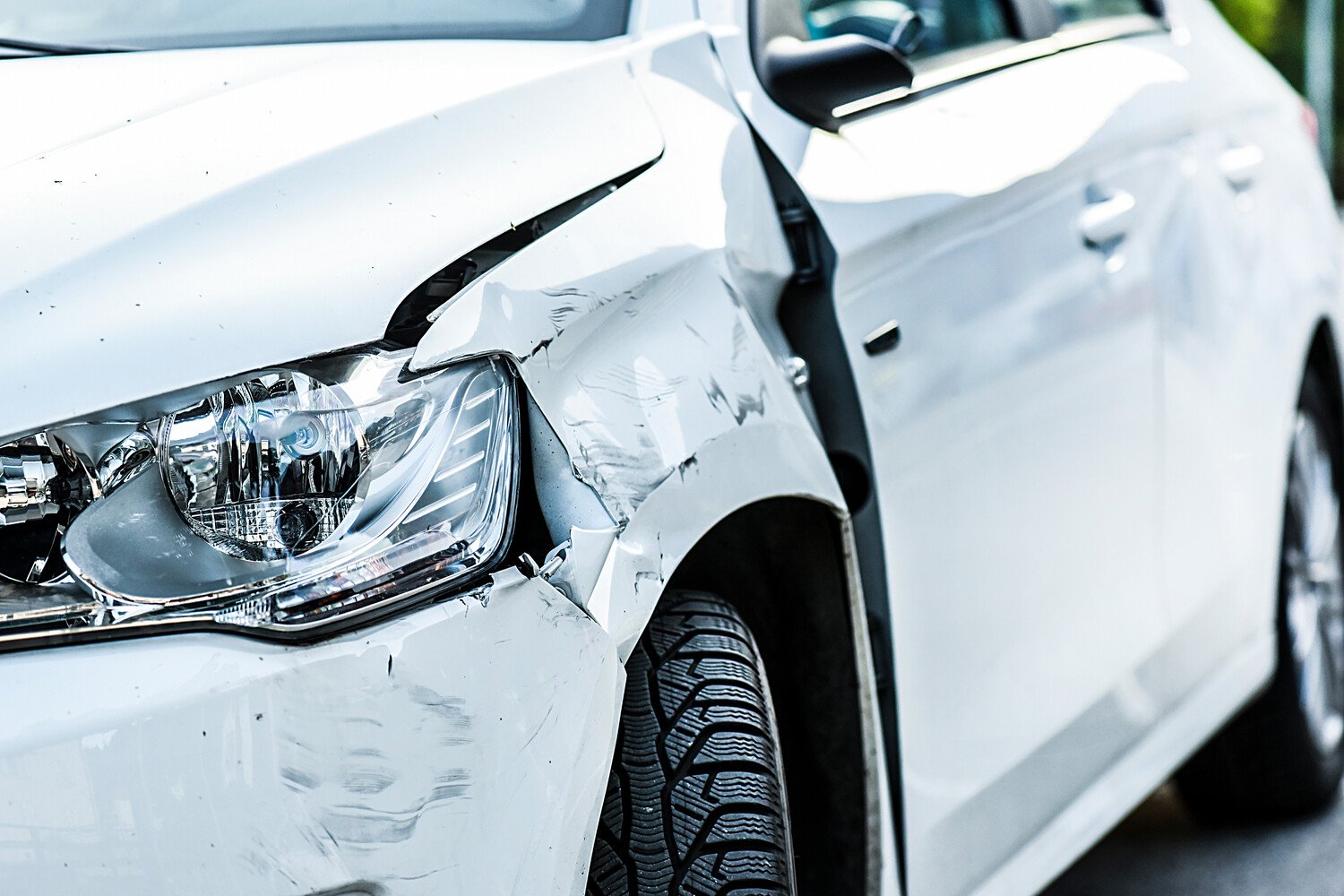RECENT POSTS
Categories
What to Do After a Hit and Run [Steps to Maximize Compensation]
If you’re ever the victim of a hit and run, it’s not a lost cause. Two things that you need to do right away, call the police and hire an attorney experienced in hit and run accidents. Taking care of these tasks will give you the best shot at getting compensation and maybe even catching the other driver that took off after the accident.
Like any other car accident, you’ll also want to check for bodily injuries on yourself and any passengers, move to a safe location out of the roadway, seek medical attention for any urgent injuries or see a doctor for after accident evaluation, and of course, contact an attorney that can help fight to get you what you need.
What to Do After a Hit and Run Accident
Knowing how to respond in a stressful situation makes all the difference. Here are some steps and things to do/not do.
Do Not Chase the Other Driver
Chasing a hit-and-run driver is dangerous and can make the situation worse. It puts you at risk of another accident, potential injury, or even a confrontation with a reckless or aggressive driver. Leaving the scene also means losing crucial evidence that could help identify the driver later. Law enforcement advises against pursuing fleeing drivers, as it could lead to legal consequences or complications with your insurance claim. Instead, stay at the scene, document everything, call the police, and let authorities handle the investigation.
Check for Injuries
After any accident, it’s critical to assess whether you have any serious injuries. Adrenaline can oftentimes prevent you from feeling serious injuries, so we always encourage those who have been in an accident to seek medical attention. Even if there are no signs of injuries, having a doctor examine you after the accident is smart and can be used as evidence later on in a court case.
Move to a Safe Location
Moving to a safe location will help to prevent further harm and ensure everyone's safety. If your vehicle is drivable and you are not seriously injured, move it to the shoulder, a parking lot, or another safe area away from traffic. Staying in the middle of the road can increase the risk of a secondary collision, putting you, your passengers, and other drivers in danger. Turn on your hazard lights to alert other motorists and, if needed, use road flares or warning triangles for visibility. However, if the accident is severe or someone is injured, it's best to stay put and wait for emergency responders while doing your best to stay out of harm’s way.
Call the Police
It’s always important to call 911 after any major accident or hit and run. Once the police arrive, they will be able to help clear the scene of the accident, collect evidence, and assist with any injuries until medical professionals arrive. They will also file a police report which can be used to support your case.
Seek Medical Attention
Some injuries, like whiplash, concussions, or internal bleeding, may not show symptoms right away but can worsen over time. A prompt medical evaluation ensures that any injuries are diagnosed early and properly treated. Additionally, obtaining a doctor's note and medical records can strengthen your insurance claim or potential lawsuit by providing documented proof of the injuries caused by the accident. Without medical documentation, insurance companies may argue that your injuries were unrelated or not severe enough to warrant compensation.
Gather Evidence
There’s not a lot of information that can be gathered after a hit and run, which makes it even more important that you do everything you can to get a head start. Start by getting good pictures of your car and any other damage that the other driver may have caused. Talk to any witnesses that could have seen what happened and could help share and prove your innocence in the situation.
Writing down any pieces of information can help a lot with the case as well. For instance, you might be able to recall what state the license plate was from or a few letters from it. Maybe you remember the make, model, or color of the other car. All these details should be promptly written down, so you don’t forget or question them later.
Contact an Attorney
Getting in contact with your attorney after a hit-and-run accident is crucial to protecting your rights and maximizing your compensation. An attorney can guide you on what to say and do to avoid common pitfalls that could weaken your claim. Insurance companies may try to minimize payouts by using your statements against you, so it's best to consult with your lawyer before speaking with them. Your attorney can handle communications, negotiate on your behalf, and ensure that all necessary evidence is collected to strengthen your case.

Will Your Insurance Cover a Hit-and-Run?
Whether your insurance covers a hit-and-run depends on your policy and the type of coverage you have. If the at-fault driver is never identified, you may need to rely on your own insurance to cover damages.
Uninsured Motorist (UM) coverage can help pay for medical expenses and, in some states, vehicle damage caused by a hit-and-run driver.
Underinsured Motorist (UIM) coverage protects you if you're in an accident caused by a driver with little or no insurance.
Collision coverage can also cover vehicle repairs regardless of fault, though you may have to pay a deductible.
Personal Injury Protection (PIP) or Medical Payments (MedPay) may cover medical costs regardless of who was at fault. Since coverage varies by state and insurer, it's essential to review your policy and consult with your insurance provider or attorney to understand your options.

What if You Were Hit by an Uninsured Driver?
Being hit by a driver who is never identified is basically the same as being hit by an uninsured driver. Since there's no responsible party to file a claim against, you may need to rely on your own Uninsured Motorist (UM) coverage, to cover medical expenses and vehicle repairs. Some states require UM coverage, while others make it optional. Your attorney can work on your behalf to get the most out of your insurance claim and help to cover all the bills and costs that you’re facing.
If you are able to identify the other driver, you could discuss with your attorney the feasibility of a civil lawsuit against the at-fault driver. This is a very rare occurrence, but in the scenario where the driver is identified and is found to have significant assets or ability to pay for the damages, then it might be worth considering. In most cases, the at-fault driver of the hit and run has no ability to pay which is probably why they ran in the first place.
Many attorneys will turn down hit and run cases when the client doesn’t have UM (uninsured motorist) coverage or if the other driver has no insurance. Just like we mentioned earlier, if neither party has insurance, you’re left to file a personal lawsuit against the other driver. This will take quite a bit of time and money to win. But it’s important to know that winning the case is just half of the battle, the other half is in actually collecting the payment after the court order. This can take months if not years to fully collect, if at all.
That might paint a grim picture, but it illustrates the importance of having sufficient coverage to protect you from these situations.
How Long Do You Have to Report a Hit and Run?
Time limits for reporting a hit and run vary by state, but acting quickly is crucial. Many states require accidents with injuries or significant damage to be reported within 24 to 72 hours, and failing to do so could lead to fines or issues with your claim. Insurance companies also have deadlines, and delaying notification may result in a denied or reduced claim. Reporting early helps law enforcement investigate while evidence is fresh and increases the chances of identifying the driver. To protect your rights, report the accident as soon as possible, even if you're unsure about filing a personal injury case.
Act Fast and Get the Compensation You Deserve
Prioritizing your safety, gathering evidence, reporting the accident, and seeking legal guidance will help protect your rights and maximize your compensation. If you’re the victim of a hit and run, reach out to our professional legal team today. Wettermark Keith has worked with thousands of personal injury and automobile accident cases. Our firm has extensive resources and connections with local law enforcement and officials, allowing us to uncover critical evidence—such as security camera footage—that can strengthen your case.
Contact us today to schedule a free consultation and take the first step toward justice.
Ready to work together? Contact us today for a free consultation.
HERE'S WHAT TO DO NEXT
If you or a loved one have been injured and think you might have a case, call us now for a free consultation.


